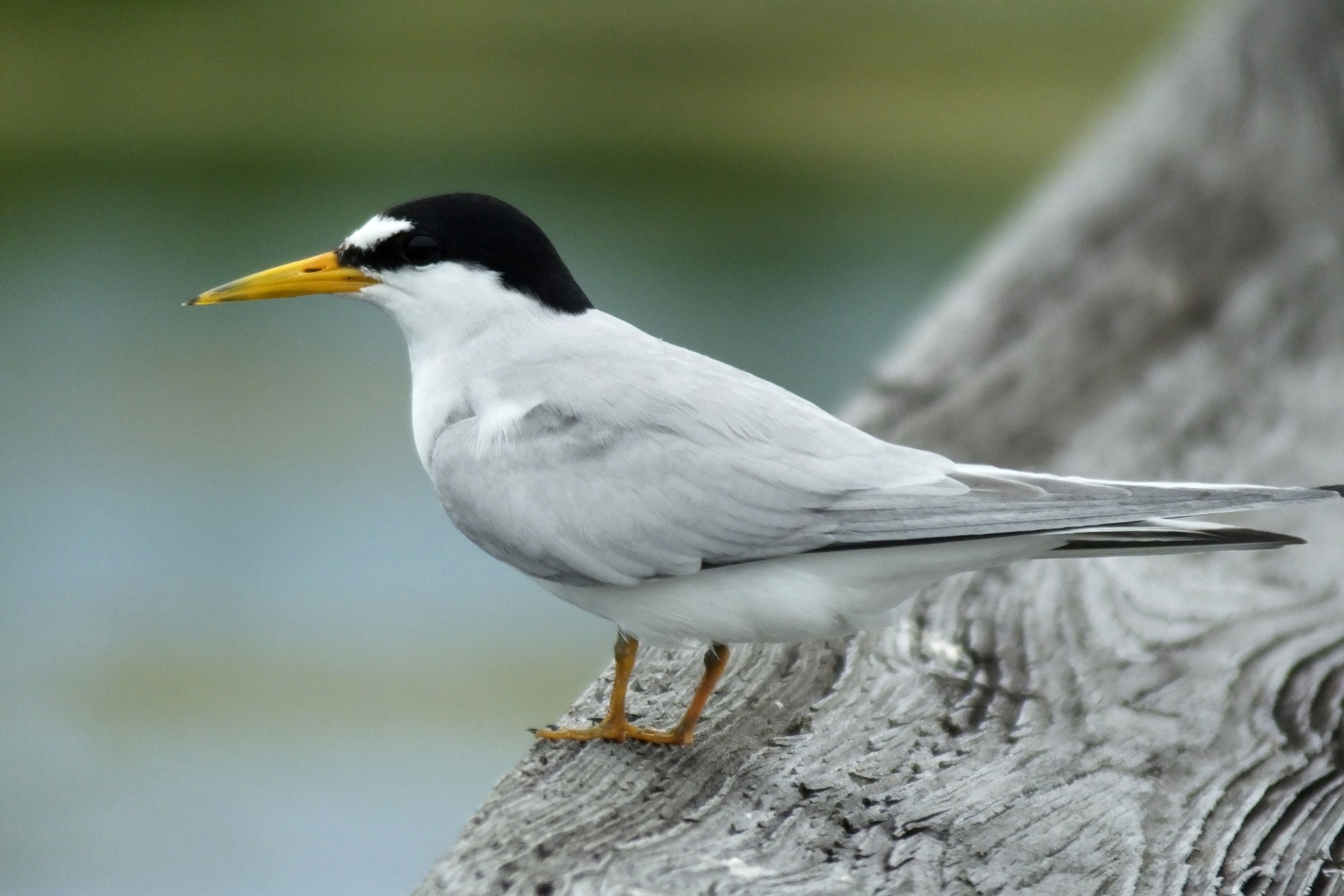Least Tern
(Sternula antillarum)

Description
The least tern (Sternula antillarum) is a species of tern that breeds in North America and locally in northern South America. It is closely related to, and was formerly often considered conspecific with, the little tern of the Old World. Other close relatives include the yellow-billed tern and Peruvian tern, both from South America. It is a small tern, 22–24 cm (8.7–9.4 in) long, with a wingspan of 50 cm (20 in), and weighing 39–52 g (1.4–1.8 oz). The upper parts are a fairly uniform pale gray, and the underparts white. The head is white, with a black cap and line through the eye to the base of the bill, and a small white forehead patch above the bill; in winter, the white forehead is more extensive, with a smaller and less sharply defined black cap. The bill is yellow with a small black tip in summer, all blackish in winter. The legs are yellowish. The wings are mostly pale gray, but with conspicuous black markings on their outermost primaries. It flies over water with fast, jerky wingbeats and a distinctive hunchback appearance, with the bill pointing slightly downward. It is migratory, wintering in Central America, the Caribbean and northern South America. Many spend their whole first year in their wintering area. It has occurred as a vagrant to Europe, with one record in Great Britain and one in Ireland. It differs from the little tern mainly in that its rump and tail are gray, not white, and it has a different, more squeaking call; from the yellow-billed tern in being paler gray above and having a black tip to the bill; and from the Peruvian tern in being paler gray above and white (not pale gray) below and having a shorter black tip to the bill. The least tern arrives at its breeding grounds in late April. The breeding colonies are not dense and may appear along either marine or estuarine shores, or on sandbar islands in large rivers, in areas free from humans or predators. Courtship typically takes place removed from the nesting colony site, usually on an exposed tidal flat or beach. Only after courtship has confirmed mate selection does nesting begin by mid-May and is usually complete by mid-June. Courtship takes the form of either an aerial display in which the female follows the flight of the male or through courtship feeding. Nests are situated on barren to sparsely vegetated places near water, normally on sandy or gravelly substrates. In the southeastern United States, many breeding sites are on white gravel rooftops.
Taxonomic tree:







